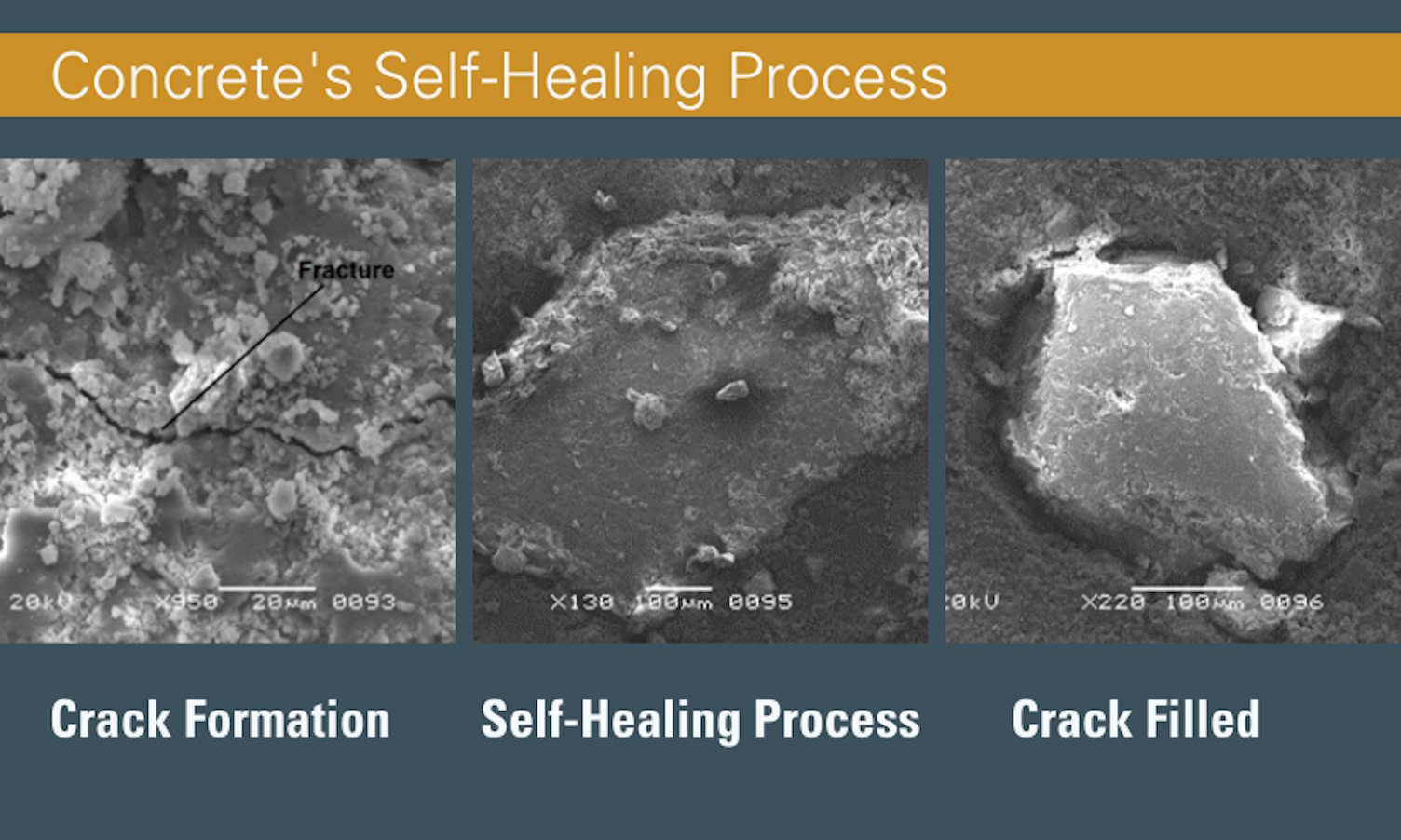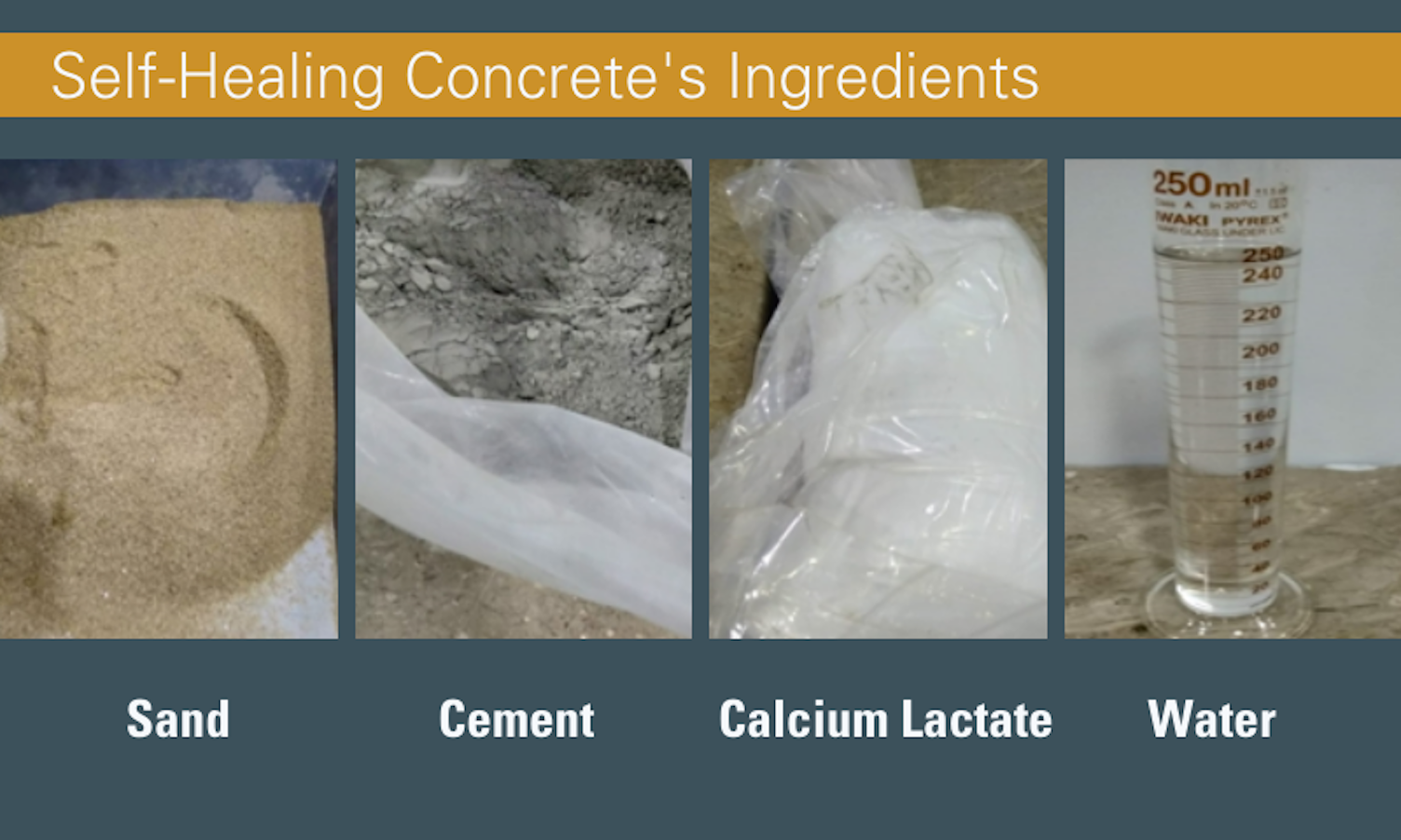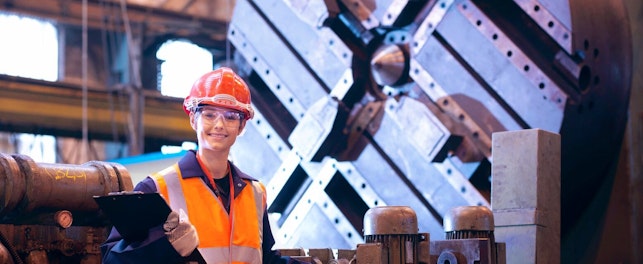Self-healing/bio concrete can play a major role in concrete-related structures. We conducted an experiment in our testing facility in Pakistan to study how self-healing concrete performs.
Why Self-Healing Concrete
With low tensile strength, concrete may take cracks easily during its service life. Cracking is one of the main factors causing the degradation of concrete durability.
Repairing timely or self-healing for cracks may extend the service-life of concrete structures. Inspection and maintenance techniques for concrete structures have therefore become the focus of interesting attention.
However, the traditional repair methods such as cement grouting and maintenance are all difficult and expensive.
Under such circumstances, the ability of self-healing cracks in concrete raised wide spread attention.
What is Self-Healing Concrete
Bio concrete can maintain structural integrity while saving billions in construction cost.
All research conducted so far show that this type of concrete gains about 25% of its original strength in the healed spot, which is more than 15% gained back when the crack is sealed by conventional method.
The self-healing agent can lie dormant within the concrete for up to 200 years.

To drive self-healing functions the following bacteria and chemicals are required:
- Bacillus Pseudofirmus
- Sporosarcina Pastteurii
- Calcium Lactate
Bacteria of the bacillus (unicellular, prokaryotic, gram-positive genus) species have exactly the accurate characteristics that could be necessary for optimum healing of micro voids.
They will be active only when water and oxygen are added in the structure. Different species of the bacillus can be used for the purpose of healing of the micro voids.
How Does Self-Healing Concrete Work
Self-healing concrete is a product that will biologically produce limestone to heal crack that appear on the surface of concrete structure.
Specially selected types of bacteria genus bacillus along with a calcium-based nutrient known as calcium lactate are added to the ingredients of the concrete when it being mixed.

When concrete structure is damaged and water starts to seep through the crack that appears in concrete the spores of the bacteria germinate on contact with the water and nutrient.
Having been activated the bacteria start to feed on the calcium lactate.
As the bacteria feed oxygen is consumed and the soluble calcium lactate is converted to insoluble limestone.
The limestone solidifies on the crack surface, thereby sealing it up.
Case Study on Self-Healing Concrete Performance in the SGS Laboratory
Cement paste specimens were used for all analyses in this study. Mixtures were designed with water to cement ratio (w/c) of 0.40 to 0.45 by using ordinary Portland cement prepare the specimen in the laboratory and cured for 7 days.
| Material Type | Material % |
| Sand | 80 |
| Cement | 20 |
| Calcium Lactate | 5 to 10 % by weight of cement |
| Bacteria | 50 to 100 gm per bag of cement |
6 x 12 concrete cylinder was made by using above mentioned ratio.
After casting, all cylinder moulds were put in curing room with a temperature of 20◦C and relative humidity of more than 90% for 24 h.
The specimens were then demoulded and placed under the standard curing room with a temperature of 20 ± 2 ◦C and relative humidity of 95% until the time of testing.
After removal from curing tank the initial cracks were made by using any techniques and raped the cylinder by cloth or other tape.
The specimens were taken out from curing room and early age cracks were created after 7 days. The concrete prisms specimens were wrapped with adhesive tape and put again in water.
The crack was measured by crack width equipment and the crack width was note down.
After generating crack sample was placed again in curing tank for 60 days and recorded healing values visible by human eyes.
Conclusion
The results of the above-described experiment show that the bacteria exhibit excellent repairing ability to small cracks, and that the self-healing agent can be applied for self-healing of early age cracks in cement-based materials.
About SGS
We are SGS – the world’s leading testing, inspection and certification company. We are recognized as the global benchmark for sustainability, quality and integrity. Our 98,000 employees operate a network of 2,650 offices and laboratories, working together to enable a better, safer and more interconnected world.
Floor No.1, Building No.340 Street 230, Zone 24,C Ring Road,
24140,
Doha, Qatar




